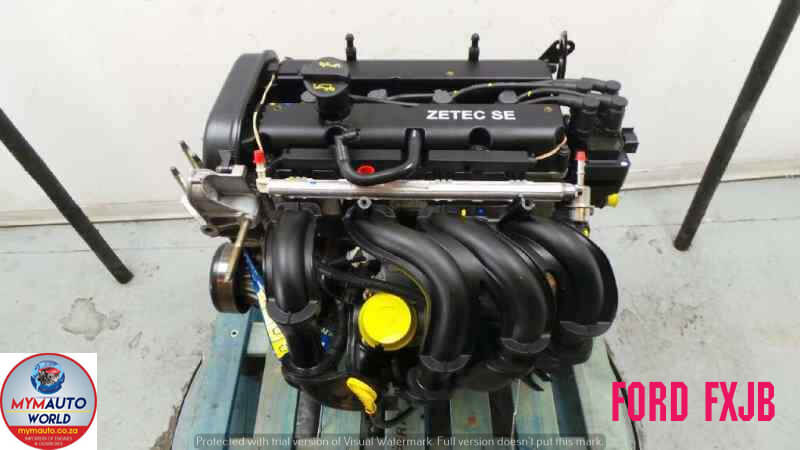Unlocking the Power of Engines: A Comprehensive Overview to Performance and Performance
Recognizing the detailed technicians of engines is crucial for both performance enthusiasts and everyday drivers. The answers may redefine our method to engine performance and efficiency in ways that are both informing and essential.
Recognizing Engine Essentials
What comprises the basic auto mechanics of an engine? At its core, an engine is a device developed to convert gas right into mechanical energy through a series of controlled surges or burning processes.
The crankshaft then changes this straight movement right into rotational power, which eventually powers the vehicle. The camshaft regulates the opening and closing of the valves, managing the intake of air and gas and the expulsion of exhaust gases. Furthermore, the engine relies on a very carefully calibrated fuel-air combination, ignition system, and cooling system to make certain ideal performance and effectiveness.
Understanding engine essentials also involves identifying the significance of engine cycles, such as the four-stroke cycle, that includes intake, exhaust, compression, and power strokes. Each phase is essential in making sure the engine works efficiently and efficiently. Mastery of these essential mechanics prepares for discovering much more intricate engine dynamics and performance metrics, essential for enhancing both power result and efficiency.
Secret Efficiency Metrics
Key performance metrics are crucial for assessing an engine's performance and power output, offering useful understandings for both producers and customers. These metrics work as standards for engine performance, permitting educated choices in design, manufacturing, and investing in.
Among the key metrics is horse power, which quantifies the engine's ability to perform work over time. Torque, determined in pound-feet, is one more critical statistics that shows the engine's rotational pressure, straight influencing velocity and towing capacity. Fuel efficiency, normally measured in miles per gallon (MPG) or liters per 100 kilometers (L/100km), assesses how effectively the engine transforms gas into movement, impacting operational prices and ecological considerations.
Furthermore, thermal efficiency measures just how well an engine transforms fuel energy into useful work, disclosing insights right into energy losses largely via heat. Emission degrees, including carbon dioxide and NOx, are additionally essential, showing the engine's environmental influence and conformity with regulative standards.

Tuning Strategies for Efficiency
Tuning techniques play a considerable function in improving engine effectiveness by maximizing efficiency metrics recognized in earlier conversations (ford fiesta engine). Numerous methods exist to tweak an engine, each contributing to enhanced fuel economic climate and lowered exhausts
One reliable method is readjusting the air-fuel proportion, making certain the engine runs within the optimum combustion regime. A leaner mix can enhance fuel effectiveness, however it should be balanced to stop misfires or engine knock. Furthermore, reprogramming the engine management system can recalibrate criteria such as ignition timing, which further boosts performance while keeping power outcome.
One more important technique entails changing the intake and exhaust systems. Upgrading to high-performance air filters and exhaust headers can lower back stress, helping with better air movement. This enables the engine to breathe even more easily, resulting in enhanced burning efficiency.
Furthermore, the execution of sophisticated tuning devices, like dyno testing, gives exact data that enables targeted changes. Routinely monitoring these efficiency metrics ensures that adjusting initiatives yield the desired performance results. Jointly, these click here to read methods not just reinforce engine efficiency however additionally add to lasting sustainability in engine operations.
Upkeep for Optimal Efficiency
Regular engine maintenance is essential for accomplishing optimum performance and long life. A well-maintained engine not just runs efficiently yet also lessens the threat of costly repair services and breakdowns. Secret parts requiring routine focus consist of oil, filters, belts, and ignition system.
Transforming the engine oil at recommended intervals is essential, as oil lubricates moving components and avoids getting too hot. Replacing oil and air filters makes certain that contaminants do not impair engine feature. Neglecting these components can cause reduced effectiveness and prospective engine damages.
Additionally, checking and changing used belts and pipes is important to avoid sudden failures. Timing belts, in certain, should be replaced according to the supplier's schedule to avoid disastrous engine damages.
Ignition system ought to additionally be checked and changed as essential, since they play a vital duty in ignition and gas effectiveness.
Future Patterns in Engine Innovation
Welcoming improvements in innovation, the future of engine design is positioned to transform efficiency and effectiveness across numerous applications. Crossbreed and fully electrical powertrains are coming to be significantly i thought about this traditional, offering lowered discharges and enhanced fuel performance.
In addition, technologies in products science are causing lighter, stronger parts that improve engine efficiency while minimizing energy intake. Advanced manufacturing methods, such as 3D printing, permit the production of complicated geometries that improve air movement and thermal management, hence enhancing burning procedures.
Additionally, the assimilation of expert system and maker knowing is readied to change engine diagnostics and performance adjusting. These modern technologies can examine huge amounts of data in real time, making it possible for anticipating maintenance and tailored efficiency improvements.
Conclusion
Finally, unlocking the power of engines use this link needs a detailed understanding of their mechanics and efficiency metrics. Implementing effective tuning methods and sticking to normal upkeep practices considerably improve engine capacities. As the automotive landscape evolves, embracing future patterns in innovation, consisting of electrification and progressed production, will certainly be crucial for optimizing performance and efficiency. This comprehensive method not only advantages fanatics but additionally adds to lasting services in the world of vehicle engineering.
Furthermore, the engine relies on a carefully adjusted fuel-air mix, ignition system, and cooling system to make certain ideal performance and performance.
Comprehending engine basics additionally involves identifying the relevance of engine cycles, such as the four-stroke cycle, which includes consumption, power, compression, and exhaust strokes. Proficiency of these essential mechanics lays the groundwork for exploring a lot more complex engine characteristics and performance metrics, crucial for enhancing both power result and effectiveness.

Welcoming innovations in modern technology, the future of engine layout is positioned to reinvent efficiency and effectiveness across various applications.